1. What made the white T-shirts popular?
| A.A fashion show. | B.Hollywood movies. | C.The American soldiers. |
| A.In 1948. | B.In 1959. | C.In 1970. |
| A.For a black leader. | B.For a fashion designer. | C.For an American actress. |
1. Where is the ship?
| A.3,000 meters beneath the ice. | B.1,000 meters beneath the ice. | C.300 meters beneath the ice. |
| A.A little frightened. | B.A bit dissatisfied. | C.Very surprised. |
| A.They lifted it from the deep sea. |
| B.They left it in the deep sea. |
| C.They took away some parts of it. |
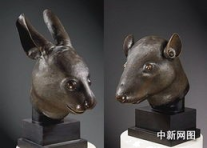
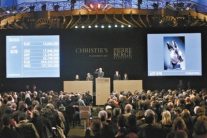
法国一家拍卖公司于2009年2月25日在巴黎公开拍卖从中国掠夺的鼠首和兔首铜像,此举激起中国人民的强烈愤慨。请你根据下表提示,用英语写一篇短文。文物背景:
1. 鼠首和兔首铜像制作于清代,是圆明园诸多装饰品之一;
2. 1860年, 英法联军火烧圆明园, 抢走包括鼠首和兔首铜像等在内的大量文物;
3. 今年二月在巴黎公开拍卖;
4. 中国政府坚决反对,要求按国际法无偿归还;文物事件;
5. 法国公司一意孤行;
6. 中国人民积极行动,采取措施阻止拍卖。
7. 你的感想(请考生谈谈对此事的看法,列举两至三条)。
注意:
1. 对所给要点,逐一陈述,可适当增加细节,使其连贯, 不简单翻译。
2. 词数:150左右,开头已给出,不计入总词数。
3. 参考词汇:auction n. & vt. 拍卖 relic [C] n.文物,遗物
___________________________________________________________________________________________________________________________________________________________________________________________________________________________________________________________________________________________________________________________________________________________________________________________________________________________________________________________________________________________
Silk was invented in China in 3000 BC. It was well integrated into the Chinese economy during the Han Dynasty,
Women played
Producing silk is a

Seven hundred years ago, Arabic merchants found something unique from China which was as “white as jade, as bright as a mirror, as thin as paper, and with a sound as clear as a bell.” Soon it became a luxury item displayed in royal place.
The item was blue-white porcelain, from Jingdezhen, China.
Jingdezhen
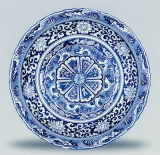
For more than 2,000 years. Jingdezhen was known as the porcelain capital of the world. Called Xinping in ancient times, the city of Jingdezhen in East China’s Jiangxi province was home to porcelain production as early as 200 B.C. in the Han Dynasty (206 B.C.-220 A.D.). During the reign of Emperor Jingde (1004-1007) of the Song Dynasty (960-1279), all of the products made here bore the royal Jingde mark, and the name of the city was changed to Jingdezhen (Jingde Town). For centuries, the city was considered China’s most important center for porcelain production. Here, ceramics were produced as far back as the Han Dynasty (206-220 B.C.). The imperial porcelain was so exquisite that it was described as being “as white as jade, as bright as a mirror, as thin as paper, with a sound as clear as a bell.”
Today, Jingdezhen remains a national center for porcelain production. The most famous types of porcelain from Jingdezhen are famille-rose porcelain, linglong porcelain, blue-white porcelain and color-glazed porcelain.
Blue-white porcelain

Among all porcelain produced in Jingdezhen, the most representative is blue-white porcelain. Blue-white porcelain originated in the Northern Song Dynasty (960-1127). During the Yuan and Ming dynasties (1271-1644) blue-white porcelain became increasingly popular, and since the 14th century manufacturers have shipped blue-white porcelain to world markets. The porcelain reached its peak in the Qing Dynasty (1644-1911). Its thin, translucent quality and attractive designs made it very valuable throughout Europe and the colonies, ranking first among blue-white porcelain nationwide.

Blue-white porcelain is the most famous among the four traditional types of porcelain produced in Jiangdezhen, and is famous as the “ever-lasting blue flower.” The blue-white style is created by drawing the design with cobalt pigment onto the stoneware body and painting over it with a transparent glaze. This style is also known as “underglazed blue.” The piece is then fired at a high temperature. Blue-white porcelain has been in production ever since thanks to its bright colors, simple yet elegant patterns, and smooth glaze that never fades.
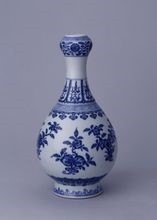
The Yuan Dynasty was a key period for the development of firing techniques for blue-white porcelain in China. Its unique characteristics were based on the techniques of former dynasties. It was during this period that blue and white porcelain was perfected and came to characterize the Ming Dynasty. China’s multi-colored porcelain was often given as gifts on diplomatic missions.
In 1979 Jingdezhen blue-white porcelain won a national golden prize and in 1985 it was honored with three gold medals at different international fairs. Since then, the name “Jingdezhen Blue-white Porcelain” has spread far and wide. It is by far a top product in the porcelain business, boasting the most prizes and the highest standards. (502 words)
1. How was the imperial porcelain described?2. When was Xinping changed to Jingde Town?
3. How many famous types of porcelain from Jingdezhen are there? What are they?
4. What made blue-white porcelain very valuable throughout Europe and the colonies?
5. What is “underglazed blue”?
6. When was it that blue-white porcelain in China was perfected?
Lying at the city center and called Gu Gong in Chinese, it was the imperial palace for twenty-four emperors during the Ming and Qing dynasties. It was first built throughout 14 years during the reign of Emperor Chengzu in the Ming Dynasty (1368-1644). Ancient Chinese Astronomers believed that the Purple Star (Polaris) was in the center of heaven and the Heavenly Emperor lived in the Purple Palace. The Palace for the emperor on earth was so called the Purple City. It was forbidden to enter without special permission of the emperor. Hence its name “The Purple Forbidden City”, usually “The Forbidden City”.
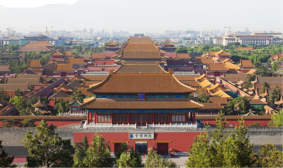
Now known as the Palace Museum, it is to the north of Tiananmen Square. Rectangular in shape, it is the world's largest palace complex and covers 74 hectares. Surrounded by a 52-meter-wide moat and a 10-meter-high wall are more than 8,700 rooms. The wall has a gate on each side. Opposite the Tiananmen Gate, to the north is the Gate of Divine Might (Shenwumen), which faces Jingshan Park. The distance between these two gates is 960 meters, while the distance between the east and west gates is 750 meters. There are unique and delicately structured towers on each of the four corners of the curtain wall. These afford views over both the palace and the city outside.
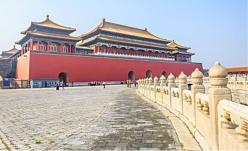
It is divided into two parts. The southern section, or the Outer Court was where the emperor exercised his supreme power over the nation. The northern section, or the Inner Court was where he lived with his royal family. Until 1924 when the last emperor of China was driven from the Inner Court, fourteen emperors of the Ming dynasty and ten emperors of the Qing dynasty had reigned here. Having been the imperial palace for some five centuries, it houses numerous rare treasures and curiosities. Listed by UNESCO as a World Cultural Heritage Site in 1987, the Palace Museum is now one of the most popular tourist attractions world-wide.
Construction of the palace complex began in 1407, the 5th year of the Yongle reign of the third emperor (Emperor Chengzu, Zhu Di) of the Ming dynasty. It was completed fourteen years later in 1420, and then the capital city was moved from Nanjing to Beijing the next year. It was said that a million workers including one hundred thousand artisans were driven into the long-term hard labor. Stone needed was quarried from Fangshan District. It was said a well was dug every fifty meters along the road in order to pour water onto the road in winter to slide huge stones on ice into the city. Huge amounts of timber and other materials were carried from faraway provinces.
Ancient Chinese people displayed their very considerable skills in building it. Take the grand red city wall for example. It has an 8.6 meters wide base reducing to 6.66 meters wide at the top. The angular shape of the wall totally frustrates attempts to climb it. The bricks were made from white lime and glutinous rice while the cement is made from glutinous rice and egg whites. These incredible materials make the wall extraordinarily strong.
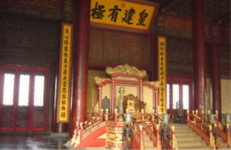
Since yellow is the symbol of the royal family, it is the dominant color in it. Roofs are built with yellow glazed tiles; decorations in the palace are painted yellow; even the bricks on the ground are made yellow by a special process. However, there is one exception. Wenyuange, the royal library, has a black roof. The reason is that it was believed black represented water then and could put out fire.
Nowadays, it is open to tourists from home and abroad. Splendid painted decoration on these royal architectural wonders, the grand and deluxe halls, with their surprisingly magnificent treasures will certainly satisfy 'modern civilians'.
1. Why is Gugong called “The Purple Forbidden City”?
2. What’s the distance between Tiananmen Square and the Gate of Divine Might?
3. Where did the emperor and his royal family live, the southern section, or the northern section?
4. Which emperor made the decision first to move the capital to Beijing in the Ming dynasty?
5. When did he move the capital to Beijing?
6. Do you think it is easy to climb the wall of the Forbidden City? If not, why?
1. What is the speaker mainly talking about?
| A.Different kinds of money. |
| B.The importance of money. |
| C.The development of money. |
| A.No one knows. |
| B.Around the 10th century AD. |
| C.Around the 9th century AD. |
| A.All the world will use the same money. |
| B.The American dollar will be used for international trade. |
| C.The Euro will be used instead of the American dollar. |

In 221 B.C , the first Emperor (Qin Shi Huang) started to build a great wall right across the north of his empire. He wanted to keep the tribes of Hans and Tartars outside his country. There were earlier walls built in some places by different kings of China, but the First Emperor, now that he ruled all China, decided to complete the wall. He decided to make it run right across from Tibet to the sea, a distance of over 1,500 miles. It took seven years to build.

The great wall ran across wild, steep, mountainous country, over the mountains and down the valleys. North and west of it there were only wild mountains and deserts, and south and east there were the rich Yellow River plains. It was built higher than a double-decker bus. In the most places it was wide enough for eight men to march side by side along the top. It was built of stones and clay. There were huge blocks of stones on the sides and on the top there were more stones. Cars could travel along the top.

About every two hundred yards there were tall, strong towers where soldiers could keep watch for the enemy, and where they could light fires to signal to each other. There were always soldiers inside these towers, winter and summer, keeping guard against attacks from the Hans. There were a few well-guarded gateways with huge wooden gates strengthened with iron nails. These connected the main roads of China to other roads through the mountains and across the desert.
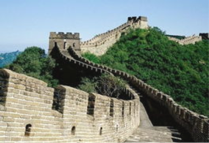
The Great Wall has often been rebuilt through the centuries and much of it running like a snake across the country and can still walk along the top. Much of the traffic which passes through the ancient gateways has not changed much. But today, as well as horses and carts there are motorcars and trucks.

To build such an enormous wall across such wild and mountains country without any modern tractors or other heavy machines was very difficult. All the Emperor’s builders were thousands of men, often prisoners of war. They lifted the earth in buckers and dragged the stones in teams with ropes over their shoulders. They worked in such wild and distant places that it was difficult to supply them with enough food or to make proper shelters in which they could sleep. Thousands of workers died and were buried in the clay inside the wall. The people hated the Emperor for his cruelty. Many people were seized and forced to work on the wall far away from their homes. Many of them never came back.
Superstitious people who believed in magic used to say that the Emperor had ridden across the mountains on magic horses. The wall appeared under him as he went along. Wherever the horse stamped it foot, a watch-tower appeared. But the wall was not made by magic. It was made by the work and lives of thousands of men.
1. The Great Wall took _________ years to build.| A.221 | B.1500 | C.7 | D.20 |
| A.north and west | B.north and east | C.south and west | D.south and east |
| A.keep the soldiers warm and cook the food | B.keep the enemy away |
| C.brighten the road and cook the food | D.signal from one tower to another |
| A.horses and carts | B.cars and lorries | C.visitors and tractors | D.Hans and Tartars |
| A.There was clay in the middle of the wall. |
| B.There were no ways through the mountains and across the desert outside the wall. |
| C.A great number of workers died because there was not enough food and shelter. |
| D.There were a great many gates in the wall. |
1. What is JFK known as in the New York airport system?
| A.Its busiest airport. | B.Its busiest air way. | C.Its sixth-busiest airport. |
| A.More than 59. | B.More than 90. | C.More than 128. |
| A.In November 1943. |
| B.In March 1948. |
| C.In July 1948. |
Alcohol or liquor, also called baijiu in Chinese, may be featured on special occasions
According to the
Chinese alcohol has a wide variety of kinds. By the type of products, they can include yellow rice wine, white wine, medicinal liquor, fruit liquor and beer. By the alcoholic content, they can



